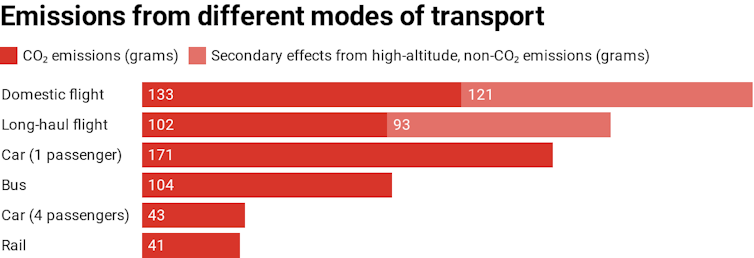Did you know?
According to the Climate Council, transport is Australia’s third largest source of greenhouse gas emissions, with the highest rate of growth. Cars are responsible for roughly half of Australia’s transport emissions. An international scorecard comparing 23 of the largest energy-using countries, ranked Australia second-worst for transport energy efficiency due to high emitting cars, and the lack of greenhouse gas emissions standards in place for cars or heavy vehicles; the relatively high distances travelled by car per person, compared to similar countries; low use of public transport (12% of trips); and low ratio of spending on public transport compared to roads.
Our preferred passenger transport modes of cars and planes cause more emissions than trains, buses, cycling and walking. For example, CO₂ emissions per passenger km can be 171 grams for a passenger car as against 41g for domestic rail. (The Conversation, Philip Laird, 2 March 2020)

Solutions to reducing transport emissions
- Avoiding car travel for trips that can easily be made by walking or riding
- Invest in an electric bike over a car
- Car pooling to work and activities with colleagues and or friends and family. More people in one car means less cars on the road
- Make use of public transport in Darwin
- Everyone loves to travel, but flying has a huge carbon footprint. Trying to fly less can make a huge difference
- Advocating to all levels of Government for money funding to be spent on cycling and walking tracks rather than roads. It is proven that where there is suitable walking and cycling infrastructure, there is less car use
- Advocating for more infrastructure and policies geared towards a transition to electric cars
City of Darwin walking and bike paths and maps
Visit the City of Darwin website for information on paths and maps.
City of Palmerston walking and bike maths and maps
Visit the City of Darwin website for information on paths and maps.